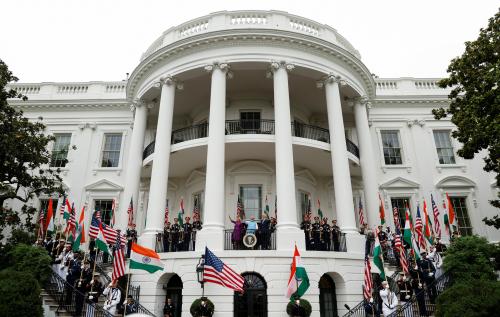The current energy cost shock presents a distinct and broad challenge in Europe and Central Asia (ECA). The crisis of surging energy prices will not only push many households into extreme poverty—it will also make it impossible for many nonpoor households to keep their homes warm. Household expenditure on energy is relatively high in ECA. And in many countries, the average shares of spending on energy were well over a threshold for energy poverty even before the current crisis. The energy price surge is also expected to create adverse effects on health and wellbeing. Research on excess winter deaths highlights the health risks to people—especially young children and the elderly—living at low indoor temperatures.
In the short term, many ECA governments will have no option but to scale up social assistance. However, there is a risk of governments mobilizing unsustainable, insufficient, and inefficient measures. Going into the heating season, the impulse in many ECA countries is to either extend benefits to the entire population by capping prices below cost-recovery levels or to support a narrow group of formally defined poor households. Price controls and finely targeted compensatory mechanisms represent two extremes. Price controls provide universal support, which is thus thinly spread out, regressive, and expensive. Finely targeted support, on the other hand, lacks the scale to cushion the shock that is adversely affecting up to 40 percent of the population (the bottom 40). In fact, the distinct challenge of this crisis is to ensure sufficient coverage and adequacy of energy assistance to those who need it while not onerously distorting the prices (Figure 1).
Figure 1. Price controls and poverty-targeted social assistance leave large gaps
ECA countries should mobilize energy assistance that is adequate in amount and population coverage, quickly scalable and targeted. Furthermore, mitigation measures should be designed not to create unintended consequences. If the market is transparent and competitive, less interference via price regulation is better. If markets are not competitive, then effort is needed to remedy market inefficiency.
Some of the social protection approaches being considered or adopted and categorized in Table 1 do not satisfy the criteria for effective energy assistance mentioned above. Some fall into the category of untargeted subsidies, indiscriminately subsidizing energy inputs via price controls that are below cost recovery and providing poorly designed tax reduction that is distributionally regressive and could lead to substandard supply and service interruptions; inadequate investment in production, transmission, and distribution infrastructure; adverse environmental consequences; and fiscal health issues. Therefore, responding to this crisis requires governments to consider the principles listed above in choosing appropriate social protection response options.
Table 1. Types and examples of social assistance support for mitigating energy price shock
| Type of transfer | Beneficiaries | Examples |
| Targeted | Standard | Top-up of categorical or means-tested poverty benefits |
| Social tariffs or utility bill subsidies | ||
| Nonstandard | Energy poverty benefits | |
| Untargeted | Price controls, caps, and tax discounts | |
| Hybrid | Dual pricing (line tariffs) |
Source: Author
Note: Standard beneficiaries are defined as existing beneficiaries or beneficiaries who are easily identifiable via social registries or existing legislation that defines eligibility. Energy poverty benefits target low-income households that cannot heat their homes without incurring a prohibitive cost relative to their income. These households are not standard beneficiaries that typical safety nets are tooled to support. Block tariff/dual pricing refers to the subsidization of an initial block of energy consumption.
What stands in the way of sound social protection in ECA?
One of the key challenges for social protection systems in ECA is their limited administrative capacity to quickly scale up. Administrative capacities include the ability to identify and verify households in need, scale up the distribution of payments, and control fraud. When administrative capacity is weak, governments are tempted to adopt price controls because of the ease of implementation. Such measures are fiscally unsustainable and produce mixed results, as the cushioning effect of the policy is diluted over a large base of beneficiaries, leading to prohibitively high costs but inadequate support for the most vulnerable.
What social protection options do ECA countries have?
If countries have advanced administrative, data exchange, and institutional targeting capacities, the best option is to roll out a benefit that limits the energy burden defined by level of energy expenditures relative to total household budget. This could be an adaptive energy benefit that varies with income and housing conditions, and which could be specified to target the poorest 40 percent of households. Because the generosity of the benefit varies with income, this approach could achieve high coverage, adequacy, and good targeting in terms of resources spent.
Countries with low administrative capacity could scale up existing programs and provide top-up benefits to standard beneficiaries such as the poor and other vulnerable groups that the system already targets. Doing so would result in better adequacy of protection for the most vulnerable groups, although it would not fully cushion the impact of energy poverty. Toward that goal, a life-line tariff paired with an energy benefit top-up to existing benefits could be a way forward. Restricting price subsidies to the initial block of consumption is a less costly alternative to the across-the-board price subsidies, and it combines universal access with self-targeting.
But many households may require support only to manage energy bill volatility.
To protect nonpoor households, governments could consider subsidizing energy consumption-smoothing that spreads the impact of short-term price-surges over several years. This kind of mechanism can be provided at the level of the utility or energy service provider by amortizing the costs of energy during energy price spikes over a longer period. In combination with energy poverty assistance, such a hybrid approach provides a better way of letting the markets drive prices and targeting public resources than untargeted approaches, such as controlling prices.
The net effect of government policies will depend on how the impact is distributed and who bears the burden of protecting households. An administratively quick solution like freezing prices that does not follow the principles outlined above will produce costly and unintended effects.
The Brookings Institution is committed to quality, independence, and impact.
We are supported by a diverse array of funders. In line with our values and policies, each Brookings publication represents the sole views of its author(s).








Commentary
How to help people in Europe and Central Asia pay their energy bills
October 18, 2022